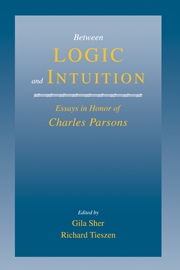Book contents
Cantor's Grundlagen and the Paradoxes of Set Theory
Published online by Cambridge University Press: 02 December 2009
Summary
Foundations of a General Theory of Manifolds (Cantor 1883), which I will refer to as the Grundlagen, is Cantor's first work on the general theory of sets. It was a separate printing, with a preface and some footnotes added, of the fifth in a series of six papers under the title of “On infinite linear point manifolds” I want to describe briefly some of the achievements of this great work, but I also want to discuss its connection with the so-called paradoxes in set theory. There seems to be some agreement now that Cantor's own understanding of the theory of transfinite numbers in that monograph did not contain an implicit contradiction, but there is less agreement about exactly why this is so and about the content of the theory itself. For various reasons, both historical and internal, the Grundlagen seems not to have been widely read compared to later works of Cantor, and to have been even less well understood. But even some of the more recent discussions of the work, while recognizing to some degree its unique character, misunderstand it on crucial points and fail to convey its true worth.
Cantor's Pre-Grundlagen Achievements in Set Theory
Cantor's earlier work in set theory contained
a proof that the set of real numbers is not denumerable, that is, is not in one-to-one correspondence with or, as we shall say, is not equipollent to the set of natural numbers (Cantor 1874);
a definition of what it means for two sets M and N to have the same power or cardinal number, namely that they be equipollent (Cantor 1878);
a proof that the set of real numbers and the set of points in n-dimensional Euclidean space have the same power (Cantor 1878).
- Type
- Chapter
- Information
- Between Logic and IntuitionEssays in Honor of Charles Parsons, pp. 269 - 290Publisher: Cambridge University PressPrint publication year: 2000
- 9
- Cited by



